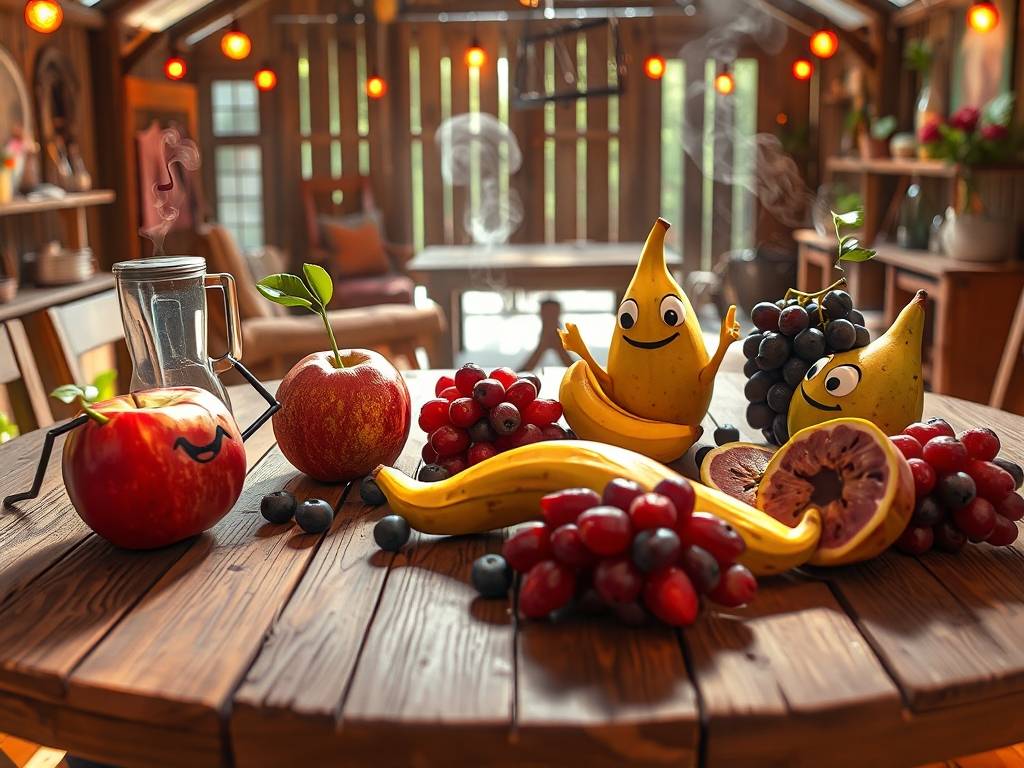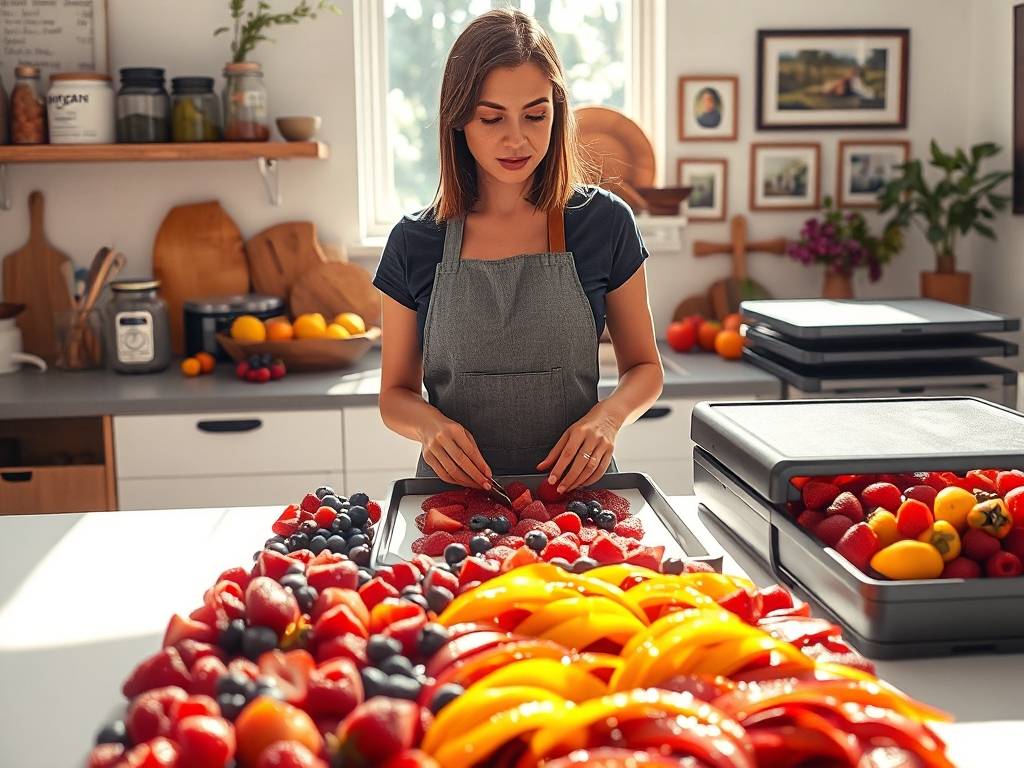How to Make Fruit Leather: Puree Fruit, Dehydrate Until Chewy
Fruit leather is a timeless, wholesome snack that combines the natural sweetness of fruit with a satisfying chewy texture. Unlike many store-bought alternatives that are loaded with preservatives and added sugars, homemade fruit leather allows you to control the ingredients, ensuring a nutritious and delicious treat. The process is surprisingly simple: puree your favorite fruits, spread the mixture thinly, and dehydrate it until it reaches the perfect chewiness. In this article, we’ll guide you through each step, from selecting the best fruits to mastering the dehydration process.
Why Make Your Own Fruit Leather?
There are numerous reasons to make fruit leather at home. For starters, it’s an excellent way to reduce food waste by using overripe fruits that might otherwise be discarded. Additionally, homemade fruit leather is free from artificial colors, flavors, and high-fructose corn syrup commonly found in commercial versions. It’s also a fantastic activity to do with children, teaching them about whole foods and basic cooking techniques while having fun.

Nutritionally, fruit leather retains most of the vitamins, fiber, and antioxidants present in fresh fruit, making it a healthier alternative to candy or processed snacks. Whether you’re packing lunchboxes, prepping for hiking trips, or simply craving a sweet bite, fruit leather is a versatile option that caters to all ages.

Selecting the Right Fruits
The foundation of great fruit leather is high-quality fruit. Almost any fruit can be used, but some work better than others due to their texture, sweetness, and water content. Popular choices include apples, strawberries, peaches, mangoes, and berries. Apples and peaches are particularly good for beginners because they have a high pectin content, which helps create a cohesive leather.
It’s best to use ripe or slightly overripe fruit, as they are sweeter and easier to puree. Avoid underripe fruits, as they may be too tart and lack the necessary sweetness. You can use a single type of fruit or get creative with combinations. For example, strawberry-banana, apple-cinnamon, or mango-pineapple are all crowd-pleasers.
If you want to enhance the flavor, consider adding a touch of lemon juice to brighten the taste or a sprinkle of spices like cinnamon, nutmeg, or ginger. For extra sweetness, a small amount of honey, maple syrup, or agave can be added, though this is optional since ripe fruits are often sweet enough on their own.
Preparing the Fruit
Proper preparation is key to achieving a smooth puree. Start by washing the fruit thoroughly. For fruits like apples, peaches, or pears, peel and core them to avoid any tough or bitter parts. Berries and grapes typically don’t need peeling, but remove any stems or leaves.
Next, chop the fruit into smaller pieces to make blending easier. If you’re using fruits with high water content, such as watermelon or citrus, you might want to cook them down slightly to reduce the liquid. This step ensures your puree isn’t too runny, which could prolong dehydration time.
For most fruits, simply steaming or simmering them until soft is sufficient. Place the chopped fruit in a saucepan with a tablespoon or two of water to prevent sticking, and cook over medium heat for about 10-15 minutes, until the fruit is tender. Let it cool slightly before blending.
Creating the Perfect Puree
Once your fruit is prepared, it’s time to puree. Use a blender, food processor, or immersion blender to achieve a smooth, lump-free consistency. If the mixture is too thick, add a small amount of water, apple juice, or lemon juice to help it blend. Be cautious not to add too much liquid, as this will increase dehydration time.
The ideal puree should be thick but pourable, similar to a smooth applesauce. If you prefer a super-smooth texture, you can strain the puree through a fine-mesh sieve to remove any seeds or skins, though this is optional.
At this stage, taste the puree and adjust the flavor as needed. Add sweeteners or spices incrementally, blending well after each addition. Remember that the flavors will concentrate slightly during dehydration, so it’s better to under-sweeten than over-sweeten.
Spreading the Puree
Now comes the fun part: spreading the puree onto your drying surface. You can use dedicated fruit leather trays for dehydrators, silicone baking mats, or parchment paper for oven drying. Avoid using wax paper or aluminum foil, as the leather may stick.
Pour the puree onto the center of your prepared tray or sheet, and use an offset spatula or the back of a spoon to spread it evenly. Aim for a thickness of about 1/4 inch (6 mm). Thinner areas may become brittle, while thicker spots might remain tacky. Consistency is key for even drying.
If you’re using a dehydrator with multiple trays, ensure the puree is spread similarly on each tray for uniform results. For oven drying, you may need to work in batches depending on the size of your baking sheets.
Dehydrating to Perfection
Dehydration is the most critical step in making fruit leather. The goal is to remove enough moisture so that the leather is pliable and chewy but not sticky or brittle.
If using a dehydrator, set the temperature to 135-140°F (57-60°C). Place the trays in the dehydrator and let them dry for 4-8 hours, depending on the fruit’s water content and thickness of the puree. Check periodically after the first 4 hours. The leather is ready when it feels dry to the touch but still peels away easily from the tray.
For oven drying, set your oven to the lowest possible temperature, ideally around 140-170°F (60-75°C). Prop the oven door open slightly to allow moisture to escape. This method may take 6-10 hours, so patience is essential. Rotate the baking sheets occasionally for even drying.
To test for doneness, touch the center of the leather; it should be tacky but not wet. Another method is to peel a small section from the edge—if it comes away cleanly without tearing, it’s done.
Cooling and Storing
Once dehydrated, remove the fruit leather from the dehydrator or oven and let it cool completely at room temperature. This step is crucial because the leather may still contain residual moisture that evaporates during cooling.
After cooling, you can roll the leather into logs, either as a whole sheet or cut into strips. If the leather is too sticky, you can place it on parchment paper before rolling to prevent sticking. For long-term storage, wrap the rolls tightly in plastic wrap or store them in an airtight container.
Properly dried and stored fruit leather can last for up to a month at room temperature, several months in the refrigerator, or even up to a year in the freezer. Always label your containers with the date and fruit type for easy reference.
Troubleshooting Common Issues
Even with careful preparation, you might encounter some challenges. If your fruit leather is too sticky or wet, it likely needs more drying time. Return it to the dehydrator or oven for another hour or two. Conversely, if it’s brittle or cracks, it may have been over-dried. Next time, reduce the drying time slightly.
If the leather is difficult to peel from the tray, ensure you’re using a non-stick surface like a silicone mat or parchment paper. You can also lightly coat the tray with cooking spray, though this isn’t necessary with non-stick surfaces.
For uneven drying, make sure the puree is spread uniformly and that your dehydrator trays or oven racks are not overcrowded. Proper air circulation is vital for consistent results.
Creative Variations and Ideas
Once you’ve mastered the basic technique, feel free to experiment. Try layering different fruit purees to create swirls or patterns. You can also mix in chia seeds, shredded coconut, or finely chopped nuts for added texture and nutrition.
For a tropical twist, use a combination of pineapple, mango, and coconut milk. For a richer flavor, consider adding a spoonful of nut butter to the puree. The possibilities are endless, so don’t be afraid to get creative.
Conclusion
Making fruit leather at home is a rewarding process that results in a healthy, customizable snack. By pureeing fruit and dehydrating it until chewy, you can enjoy the natural flavors of fruit in a convenient, portable form. With a little practice, you’ll be able to create endless variations that suit your taste preferences and dietary needs. So grab your favorite fruits, fire up the dehydrator or oven, and start making your own delicious fruit leather today!






发表评论